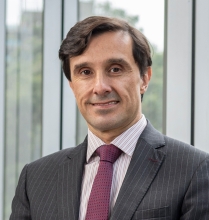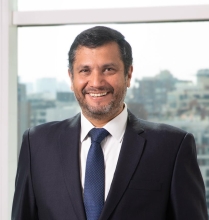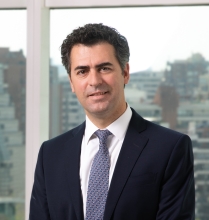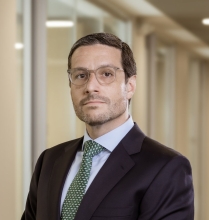Real estate investment and finance trends in Latin America

The pandemic, the global economic climate, and the political situation in Latin America have changed the course of real estate investment in the region. The new scenario has seen a rise in alternative mechanisms for the industry's assets. In this article we look at the main new developments observed in Colombia, Chile, Mexico and Peru.
There is no doubt that the effects COVID-19 has had on our way of life, and the political and social processes that have occurred in Latin America and the world over in the past two years have impacted on all economic activities in a range of ways, by creating unforeseen changes and accelerating others which until very recently were only seen as incipient trends. This has benefited industries such as e-commerce, while others, such as travel and tourism, have been hit hard.
In this scenario, the real estate business has its own challenges and particular factors, including: a fall – which seems to be transitional as a general rule - in commercial rent (offices and retail properties), an accelerated increase in construction costs, rising interest rates, a greater availability of finance for developers and buyers of these assets, and a change to real estate finance structures. All of these factors have had the effect of narrowing margins in the real estate business.
In this context, the Garrigues real estate team in Latin America takes a look at a few trends in Colombia, Chile, Mexico and Peru, in relation to investment in real estate assets and to the finance structures for these projects.
1. Colombia: plan for economic recovery
In Colombia, the construction industry is spearheading the post-pandemic economic recovery process. The Colombian government has attempted to boost this industry, especially in the residential segment, using demand-side and supply-side incentives and subsidies.
On the supply side, incentives have been given to builders in the form of an exemption from income tax on revenues from lending for the construction of social housing (vivienda de interés social -VIS-) or priority interest housing (vivienda de interés prioritario -VIP-) and VAT refunds on building materials for social or priority housing. On the demand side, the Colombian government has traditionally spurred demand by providing direct subsidies, which were increased due to the pandemic, and extended to target the buyers of more expensive housing as well as buyers of social or priority housing, .
In relation to finance sources for construction in all segments (consisting of residential, retail, offices and logistics parks), Colombia offers a fairly flexible market which is proving safe for investors by reason of the widespread use of real estate trust mechanisms in the development and construction of building projects. These are managed by trustee companies, entities authorized and supervised by the Colombian Financial Supervisory Authority.
In that context, the finance sources that may be found (and have been perfected) on the real estate market – although they have not yet overtaken the typical building loan format -, are (i) selling trust interests, namely, obtaining funds from institutional or non-institutional investors by selling shares in real estate trusts for development or construction; (ii) obtaining finance through private equity funds, supervised institutions, which are offering increasing levels of activity, liquidity and professional assistance in the structuring and performance of real estate projects, and, (iii) obtaining capital on the securities market by issuing bonds or debt securities.
It is obvious from this that the real estate industry is a strategic element of the economic recovery plan, which has the confirmed the status of our market as one of the most active. This is because the finance industry and independent investors are offering a range of options for supplying the capital needed to continue on the path of economic growth expected in a post-pandemic period.
2. Chile: preferred equity structures
Very broadly, a process commonly used for real estate development in Chile involves the developer buying land out of its own equity to then deliver the asset by mortgaging it and achieve finance for the building project. Later, the proceeds obtained from selling the project or units are used to repay the finance and the developer obtains a return on its investment.
Third party investors are appearing with increasing frequency in this equation. These investors agree to buy the project units at a preferred price, which they advance in full or in part as covenanted in the agreement, in view of the relevant security interests under the law, and at the same time they are willing to relieve the developer of the obligation to sell the units that it promised to sell to them at preferred prices, if the developer suitably remunerates them for the down payments made towards the selling price. Therefore, if the developer does not manage to sell the project units to third parties, they will be bought by the investors under a preferred equity mechanism at the agreed prices, or, if a sale is achieved, the developer refunds to the investors the amounts they invested plus the additional sums agreed in respect of the right to cancel the promissory purchase agreements signed with them.
The property developer thereby saves itself from having to find part of the capital it has to contribute to projects, by delivering a portion of the return to the investor in exchange, without affecting the security interest of the person financing the building project.
The described preferred equity structures have been used for several years now, by concluding promissory purchase agreements with a number of special clauses or additional covenants, although they do not have their own special applicable legislation. This structure has moreover proved to be quite flexible, by being able to be implemented at various stages of the development process and for different types of real estate projects.
Although the absence of legislation does not prevent concluded agreements from taking effect, it does mean that implementing them correctly requires specialized legal and tax advice, to ensure that developer and investor achieve their business goals in view of the various circumstances that may be encountered over the life of the project and their specific characteristics. A important point to bear in mind is that, as a general rule, the various Chilean legal operators will very likely tend to give to agreements not expressly mentioned in the legislation – undefined or unnamed agreements – the treatment that the law gives to defined contracts bearing the most similarity to them.
The absence of specific rules, despite the resulting need for close attention and care when drafting the agreements and implementing the structure, has not dampened the expansion of this type of alternative investment or finance mechanism for real estate. Perhaps because the Chilean real estate market already knew that the existence of a special law or rules is not necessary to implement new types of agreements, as a result of past experience concerning finance lease agreements, which despite being in widespread use for more than 35 years, do not have their own special rules.
3. Mexico: the rise of 'FIBRA' infrastructure and real estate trusts
Persistently high interest rates, in comparison with countries like the United States or Spain, as well as the devaluation of the Mexican peso in 2020, impacted on the use of traditional finance mechanisms in the real estate industry in both home and foreign currencies.
High activity has continued in the real estate industry, however, due in part to the Mexican infrastructure and real estate trusts known as FIBRAs (Fideicomisos en Infraestructura y Bienes Raíces).
Infrastructure and real estate trusts are a type of vehicle created in 2011 to finance the purchase and construction of real estate assets to be rented. These trusts are focused on a number of segments of the real estate industry, such as offices, industry, hotels, retail and storage.
They are administered by real estate market experts who take care of maintenance, marketing and administration concerning the real estate assets.
From another angle, the trust issues share certificates on the stock exchange so that investor members of the public can invest in them. The raised cash is used to pay the owners that contributed real estate assets to the FIBRA infrastructure and real estate trust, in addition to paying for their administration and for purchasing new assets. Under these arrangements, 95% of the net annual income obtained from renting the assets is distributed among trust share certificate holders.
That said, expected growth in the real estate industry during 2022 will probably trigger greater activity by other industry players who will obtain funds using traditional finance models.
4. Peru: more security interests
Until quite recently, finance for major commercial real estate projects in Peru (office buildings and shopping malls, among others) provided by large sophisticated developers, typically involved the use of hybrid financing structures. These belonged to typical recourse corporate finance, and to traditional real estate finance used globally, which is similar to project finance, where recourse to the sponsor is very restricted, and analysis and structure will depend much more on the value and cash flows of the project concerned.
A fall in demand for commercial real estate and volatility in the associated prices (due to the political economic situation in Peru) have caused the use of traditional real estate finance structures to rise substantially, due to a higher market risk.
As a result, we are seeing increasing demand for complex structures consisting of “absolute” interests in the assets and revenues provided as security, greater restrictions on recourse to the sponsor or to other assets of the sponsor, less reliance on the demand and cash flows that the projects might generate and a greater focus on asset value and other security interests as further protection in stress scenarios, among others.
Although these structures are clearly more typical to international real estate finance, in this case they are the outcome of a slowdown in the commercial real estate market, which has pushed up market risk and therefore credit risk .
It would not be unreasonable to think that – subject to a case-by-case analysis, obviously - the finance market for large commercial projects will continue along this path, even if Peruvian commercial real estate returns to previous demand and stability levels.
Contacts



-
+56 2 29419000

-
+56 2 29419000

-
+52 55 1102 3570

